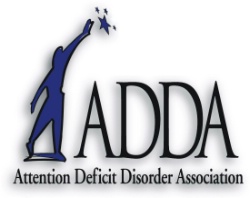What is ADHD? Attention deficit hyperactivity disorder (ADHD) is one of the most common childhood disorders and affects about 11% of children in the US. ADHD is a chronic condition, which may lead to several problems during childhood and adulthood, e.g., alcohol and drug abuse, failure in school, or problems keeping a job. Symptoms include difficulty staying focused and paying attention, difficulty controlling behavior, and hyperactivity (over-activity). ADHD has three subtypes: 1) predominantly hyperactive-impulsive; 2) predominantly inattentive; and, 3) combined hyperactive-impulsive and inattentive. Sub Types The different sub types are categorized based on the following: Causes Scientists are not sure what causes ADHD, although many studies suggest that genes play a significant role. A potential link also exists between cigarette smoking and alcohol use during pregnancy and ADHD in children. In addition, preschoolers who are exposed to high levels of lead, which can sometimes be found in plumbing fixtures or paint in old buildings, may lead to a higher risk of developing ADHD. The idea that refined sugar causes ADHD or makes symptoms worse is a popular belief, but there is more research now that discounts this theory than supports it. In one study, researchers gave children foods containing either sugar or a sugar substitute every other day. The children who received sugar showed no difference in behavior or in learning than did those who received the sugar substitute. Another study in which children were given higher than average amounts of sugar or sugar substitutes showed similar results. Recent research that comes from England indicates a possible link between consumption of certain food additives like artificial colors or preservatives, and an increase in activity that is associated with ADHD. PNL Investigations Our understanding of the neuropathology of ADHD stems primarily from structural and functional MRI (Makris et al., 2007). These studies have shown abnormalities in the corpus callosum, the sensorimotor cortex, the cerebellum and other brain regions involved in processing attention, activity and impulsivity. Further, functional MRI studies have shown abnormalities in the default mode network (parts of the brain involved in thinking about the past or future when a person is at rest and performing no tasks) in ADHD patients. Thus, there is increasing evidence of dysfunction in the network organization in ADHD (Makris et al. 2008). However, very little work has been done to analyze the properties of anatomical (physical connections as opposed to functional relations) networks in ADHD. The PNL is currently focused on acquiring high-resolution diffusion and functional MRI data from several ADHD children to understand the circuitry and networks that are affected in ADHD. Due to hyperactivity, most subjects cannot stay still in an MRI scanner for long periods of time, a necessary requirement to acquire high-resolution data. The PNL along with collaborators from MGH (Mass General Hospital) have developed a fast imaging sequence that reduces the scan time of advanced scans from 45 minutes to about 5 minutes. This work is spearheaded by Dr. Yogesh Rathi who received a grant from the National Institute of Mental Health to develop this fast imaging sequence. This new sequence has enabled the acquisition of advanced brain MRI data, in a short period of time, which we hope will lead to new insights in our understanding of ADHD. We hope to know more about the structural and functional networks that are affected in ADHD. This could lead to a better understanding of the pathophysiology of ADHD and eventually help in the development of interventions (pharmacological and non-pharmacological) for this condition. We are currently recruiting ADHD children and typically developing kids (ages 6 to 12 years). Please contact 617.355.8525 or ADHDMRIstudy@childrens.harvard.edu for more information. Helpful Resources. Below are several links that may be helpful in understanding what is Attention Deficit Hyperactivity Disorder. We encourage you to follow up on the knowledge provided in these links. Attention deficit hyperactivity disorder (ADHD) is one of the most common childhood disorders and affects about 11% of children in the US. ADHD is a chronic condition, which may lead to several problems during childhood and adulthood, e.g., alcohol and drug abuse, failure in school, or problems keeping a job. Symptoms include difficulty staying focused and paying attention, difficulty controlling behavior, and hyperactivity (over-activity). ADHD has three subtypes: 1) predominantly hyperactive-impulsive; 2) predominantly inattentive; and, 3) combined hyperactive-impulsive and inattentive. The different sub types are categorized based on the following: Most children have the combined type of ADHD Scientists are not sure what causes ADHD, although many studies suggest that genes play a significant role. A potential link also exists between cigarette smoking and alcohol use during pregnancy and ADHD in children. In addition, preschoolers who are exposed to high levels of lead, which can sometimes be found in plumbing fixtures or paint in old buildings, may lead to a higher risk of developing ADHD. The idea that refined sugar causes ADHD or makes symptoms worse is a popular belief, but there is more research now that discounts this theory than supports it. In one study, researchers gave children foods containing either sugar or a sugar substitute every other day. The children who received sugar showed no difference in behavior or in learning than did those who received the sugar substitute. Another study in which children were given higher than average amounts of sugar or sugar substitutes showed similar results. Recent research that comes from England indicates a possible link between consumption of certain food additives like artificial colors or preservatives, and an increase in activity that is associated with ADHD. Our understanding of the neuropathology of ADHD stems primarily from structural and functional MRI (Makris et al., 2007). These studies have shown abnormalities in the corpus callosum, the sensorimotor cortex, the cerebellum and other brain regions involved in processing attention, activity and impulsivity. Further, functional MRI studies have shown abnormalities in the default mode network (parts of the brain involved in thinking about the past or future when a person is at rest and performing no tasks) in ADHD patients. Thus, there is increasing evidence of dysfunction in the network organization in ADHD (Makris et al. 2008). However, very little work has been done to analyze the properties of anatomical (physical connections as opposed to functional relations) networks in ADHD. The PNL is currently focused on acquiring high-resolution diffusion and functional MRI data from several ADHD children to understand the circuitry and networks that are affected in ADHD. Due to hyperactivity, most subjects cannot stay still in an MRI scanner for long periods of time, a necessary requirement to acquire high-resolution data. The PNL along with collaborators from MGH (Mass General Hospital) have developed a fast imaging sequence that reduces the scan time of advanced scans from 45 minutes to about 5 minutes. This work is spearheaded by Dr. Yogesh Rathi who received a grant from the National Institute of Mental Health to develop this fast imaging sequence. This new sequence has enabled the acquisition of advanced brain MRI data, in a short period of time, which we hope will lead to new insights in our understanding of ADHD. We hope to know more about the structural and functional networks that are affected in ADHD. This could lead to a better understanding of the pathophysiology of ADHD and eventually help in the development of interventions (pharmacological and non-pharmacological) for this condition. We are currently recruiting ADHD children and typically developing kids (ages 6 to 12 years). Please contact 617.355.8525 or ADHDMRIstudy@childrens.harvard.edu for more information.











Comments are closed.